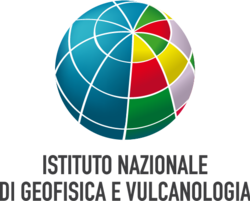| Istituto nazionale di geofisica e vulcanologia | |
 Logo | |
 | |
 Headquarters building in Rome | |
| Agency overview | |
|---|---|
| Formed | 29 September 1999 |
| Preceding agencies |
|
| Jurisdiction | Government of Italy |
| Headquarters | Via di Vigna Murata 605, Rome, Italy 41°49′42″N12°30′54″E / 41.828294826641816°N 12.515101960107794°E |
| Employees | ~1000 |
| Agency executives |
|
| Parent agency | Ministry of University and Research |
| Child agency |
|
| Website | ingv.it |
The National Institute of Geophysics and Volcanology (Italian : Istituto Nazionale di Geofisica e Vulcanologia, INGV) is a research institute for geophysics and volcanology in Italy.
Contents
INGV is funded by the Italian Ministry of Education, Universities and Research. [1] Its main responsibilities within the Italian civil protection system are the maintenance and monitoring of the national networks for seismic and volcanic phenomena, together with outreach and educational activities for the Italian population. The institute employs around 2000 people distributed between the headquarters in Rome and the other sections in Milan, Bologna, Pisa, Naples, Catania and Palermo.[ citation needed ]
INGV is amongst the top 20 research institutions in terms of scientific publications production. [2] It participates and coordinates several EU research projects and organizes international scientific meetings in collaboration with other institutions. [3]